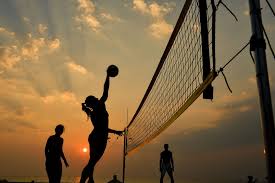
I recently watched an awesome video someone shared online about friendship and your “tribe.”
I invite you to watch it as well here.
What exactly is your tribe? Well for starters, you have the power to decide who you want it to be.
The people who are in your tribe are essentially the people you identify as your support system. They are the people that you associate with most. Essentially your tribe includes your friends, mentors, colleagues, and/or family.
What is it that makes knowing your tribe so important though for leadership, success, and character development?
Well, did you know that you are the average of the 5 people you spend the most time with?

Motivational speaker Jim Rohn famously stated this, which he relates to the law of averages. This law states that the result of any given situation will be the average of all outcomes. No matter what relationship we have, we are influenced heavily by those around us. We may not believe that this is the case, but it most definitely is true.
Think about it. Who are your 5 closest friends or “tribe” members? What activities do they do? What kind of style do they have? What types of clothes do they wear? What sayings or words do they frequently use? What are their values? More than likely, you engage in similar things, have similar values, and may even wear similar clothing styles and talk alike.

I’m sure you have experienced being around someone who says a word or phrase often and after being around them for awhile you start to say it too. It’s because they have just influenced you! I know that I have experienced this many times before.
The bottom line is that the people you surround yourself with matters.

Consider your five people or your tribe. Imagine them all in your boat of life. Are they helping you row towards the destination you’re aiming for or are they drilling holes?
It’s not about the size of your circle but the loyalty that’s in it. What this means is that it does not matter how MANY people you have in your tribe, the quality of the people in it matters more.
Surround yourself with positively impactful people!

I’ve been known to be picky about who I allow into my circle of close friends. I definitely don’t have a lot of close friends, but those who I am close to definitely surpass me in all aspects that I strive to be. With my tribe I am not the average, I am below the average.
They keep me on track and motivate me to work towards my goals and to be the best version of myself that I can possibly be. They don’t judge me or criticize unless it’s coming from a point of care because they know that I can be and do better. Essentially they call me out on my bullshit. There isn’t jealousy or comparison because we all want to support one another and are happy to see each other succeed. My tribe is along with me for my ride helping paddle my boat and I am along for their ride paddling just as hard. It goes both ways!

Since you are the average of the 5 people you spend the most time with, what kind of person does that make you? Consider what kind of person you want to be. How are these two people aligning with one another?
Surround yourself with those who push you to be your best and tell you the hard truth, even when you don’t want to hear it. We need people to call us out on our bullshit and support us and pick us up when needed as well.
The same goes for when you are hiring people for your business or are a coach and developing your team.
Pick people who align with your values and vision for the team/company.
Do they show up how you want them to?
“Don’t let your world create you. You create your world.”
Hire or allow people on your team who fit and have the same vision as you.
Many businesses and teams hire or make the team for “skills” rather than “fit”. Hire and/or pick people who fit into the culture you are trying to create and build meaningful relationships with them. If they feel respected and valued, they will be more efficient and motivated workers/students/athletes at their job, in a classroom, or out on the field.
I am fortunate to have these members in my tribe and you can establish an amazing supportive tribe as well. You have to first know what you want, where you want to go, and then go out and connect with people who share your vision.
Ultimately if you want to be successful, you need people on your team and in your tribe to help make it happen! Let people in your boat who are there to help you row, not to drill holes or are added weight.

Note: The pictures throughout this blog are my main tribe members. My family is also in that circle, I just ran out of room for pictures and wanted to focus more on my support system from my friends and boyfriend rather than the realm of family.













